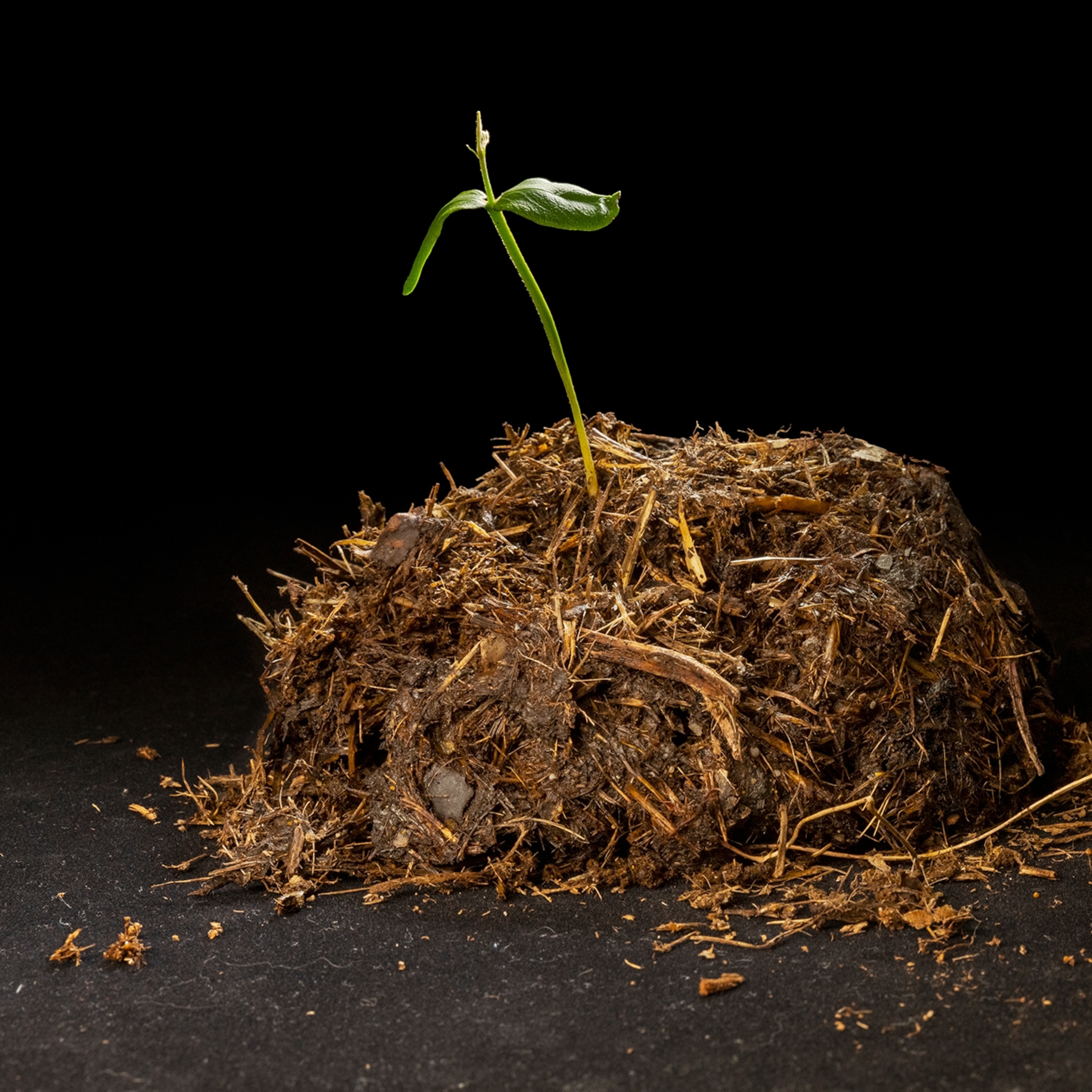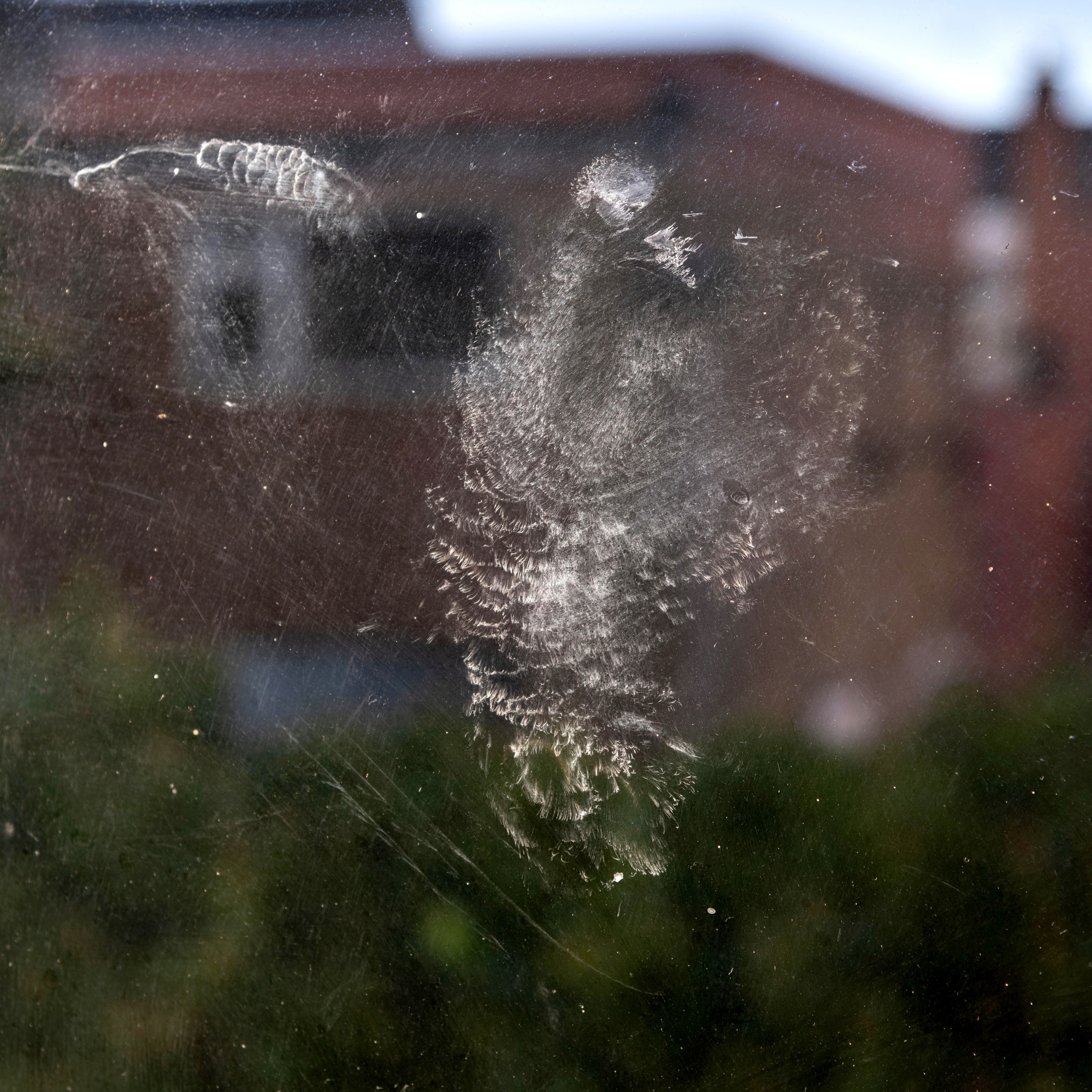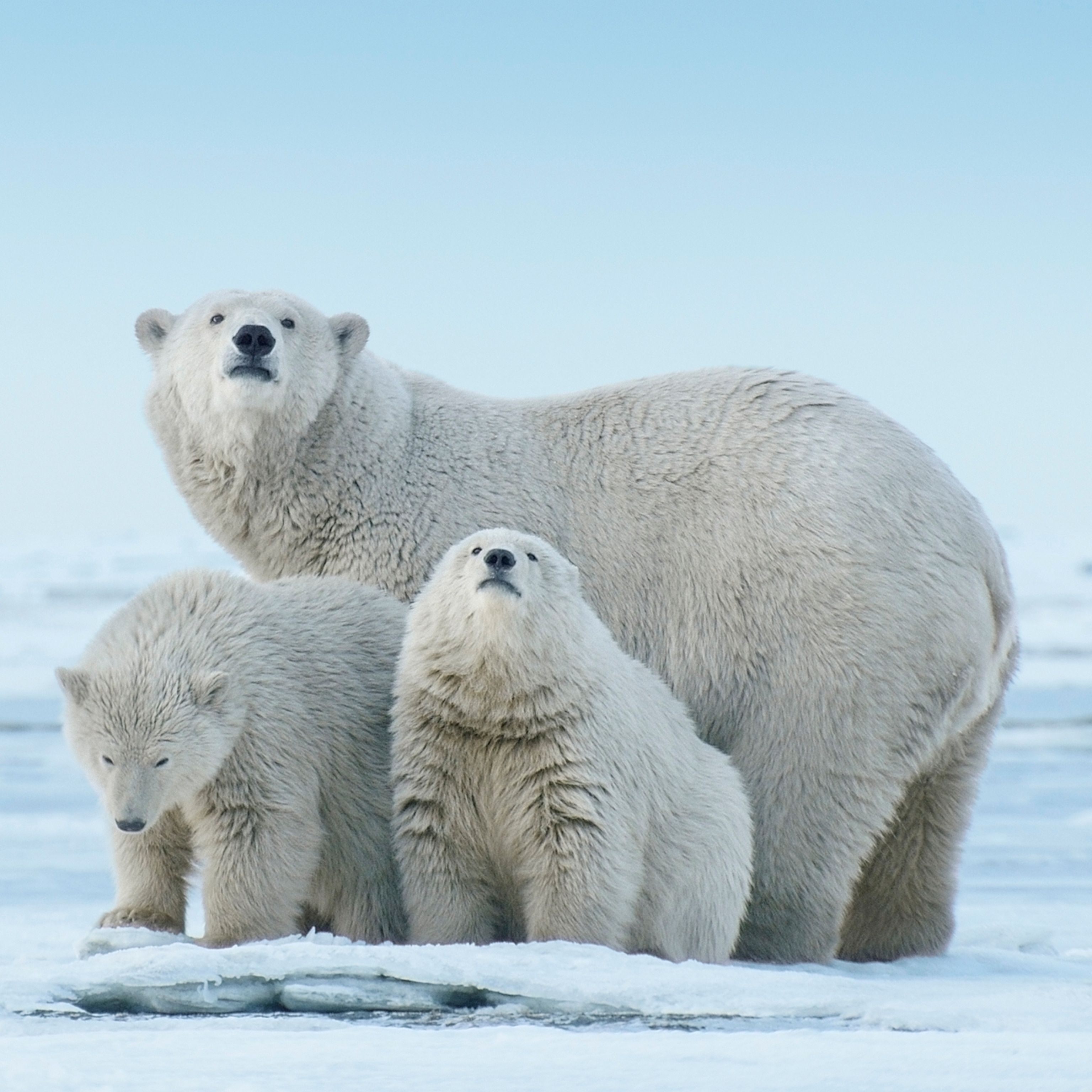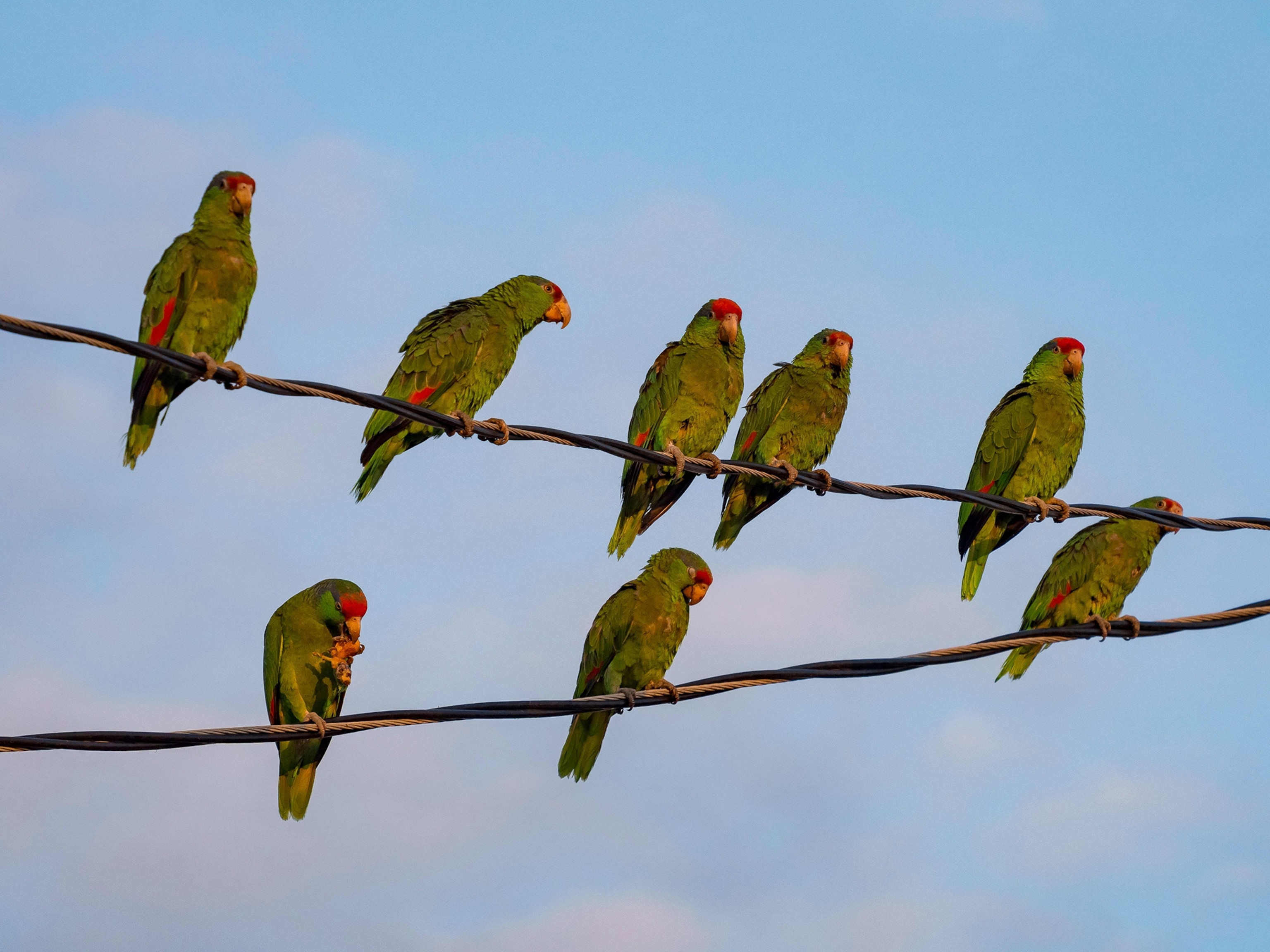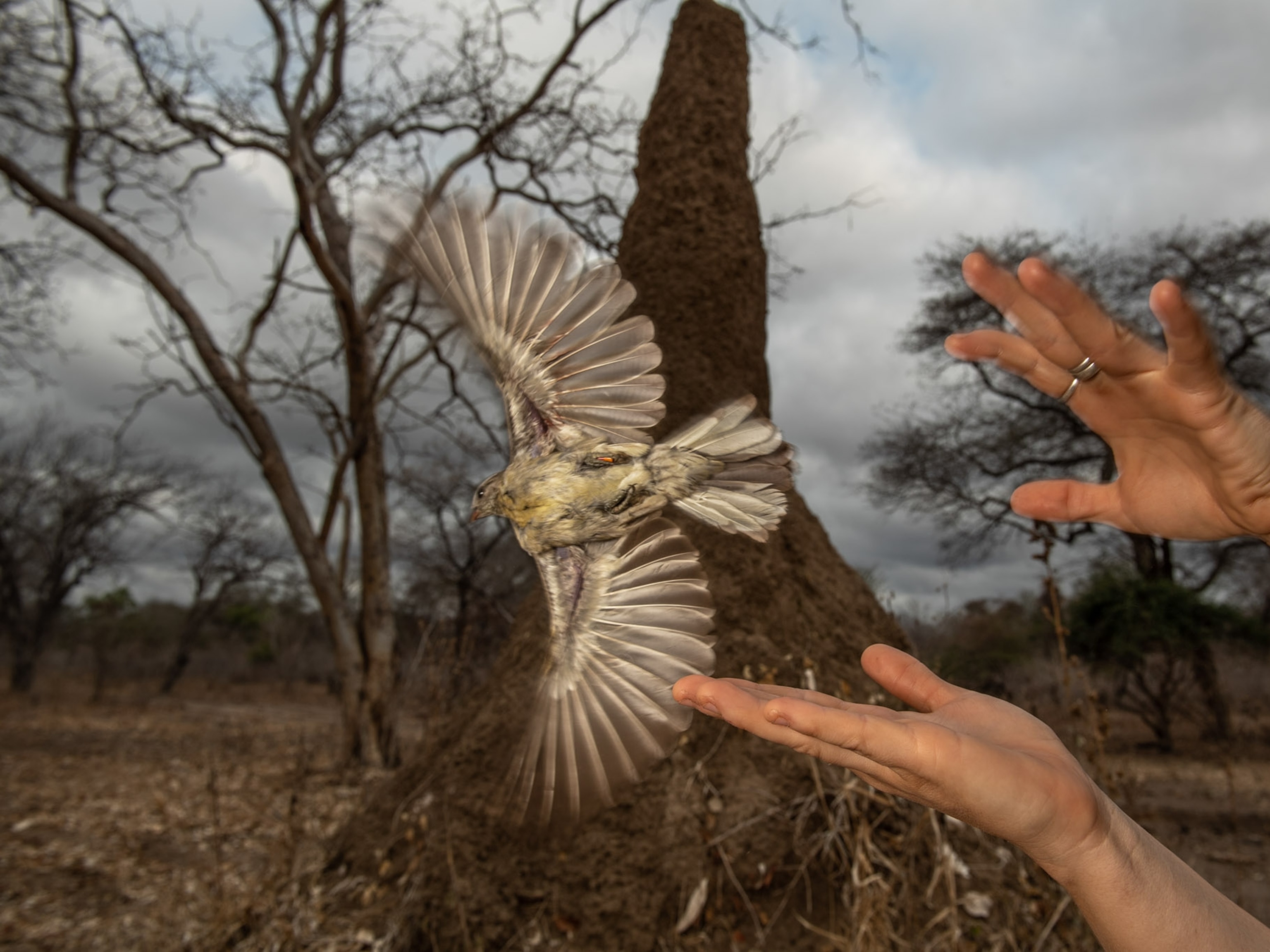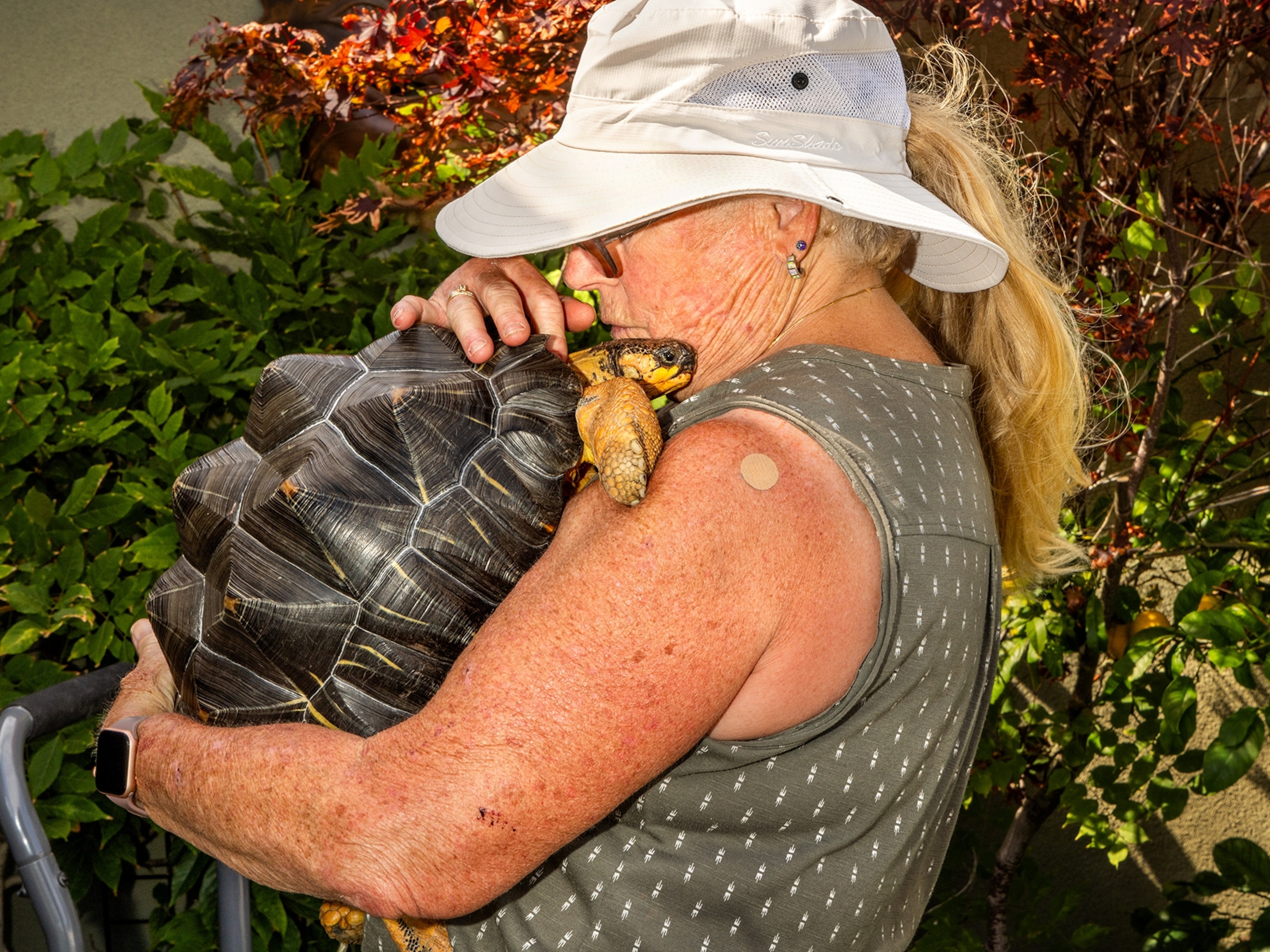Meet the vampire flies of the Galápagos Islands
Darwin's famous finches are under threat from these parasitic flies. But new research shows some have a better chance of survival than others.

In the 1950s, an insect hitched a ride to the Galapagos Islands, that shining beacon of biodiversity that’s home to giant tortoises, free-diving marine iguanas, and the world-famous finches that inspired Charles Darwin’s theory of evolution by natural selection.
The newcomer is called the avian vampire fly, and it its young offspring do not play nice.
Female flies lay their eggs in bird nests, and when the eggs hatch, those baby vampires start living up to their name: At first, the larvae are so small, they wriggle inside the nostril of a chick and feed on the soft, fleshy tissue within. But after molting several times, the avian vampire flies become large, plump maggots that are strong enough to drill into the chicks’ flesh.
“What’s really scary about this is that these flies can cause up to 100 percent mortality in nestling Darwin's finches,” says Sarah Knutie, a disease ecologist at the University of Connecticut and a National Geographic Explorer. “And the reason why they die, essentially, is because the maggots eat all their blood.”
Death by exsanguination. “Not a great way to go,” says Knutie, who notes that even the chicks who survive can bear deformed nostrils for the rest of their lives. Not only does this make it difficult for the birds to breathe, but it can interfere with their ability to sing and find mates. “So, it's not surprising that this is really a top conservation concern in the Galápagos Islands,” says Knutie.
Now, because many of Darwin’s finches—there are 17 species in all—are already threatened with extinction due to introduced predators, diseases, and habitat loss, Knutie and her colleagues are racing to find ways to stop the non-native insects. And her most recent study, published in February in the journal Global Change Biology, might have found an unlikely ally in urbanization.
With funding from the National Geographic Society, the scientists monitored nests of small ground finches (Geospiza fuliginosa) in natural environments as well as in the capital city of Puerto Baquerizo Moreno. In both locations, some nests were treated with insecticide to prevent avian vampire flies from bothering the finches, while in other nests, nature was allowed to take its course.
When the nests were treated with pesticides, the chicks in both urban and natural environments survived at essentially the same rate.
“But when the nests were parasitized, survival was over six times greater in urban nestlings compared to non-urban nestlings,” Knutie says.
In other words, something about life in the city appeared to rescue the finch babies from exsanguination by fly. The next questions were what and why.
It’s survival in the city
While the study of urbanization is relatively young, scientists have already catalogued a number of surprising ways that city living changes animal shapes, sizes, and behaviors.
For instance, a study published in Communications Biology in 2021 found that urbanization and its effects led to larger body sizes in North American mammals. Similarly, anole lizards living in Puerto Rico’s urban areas grew longer limbs than their counterparts out in the forests, according to a 2016 study.
Other studies found that normally solitary bushbabies were more social on the streets of Pretoria, and urbanized mountain chickadees were more bold in the face of simulated predators in British Columbia.
(Wild animals are adapting to city life in surprisingly savvy ways)
Darwin’s finches have also been included in such studies, with earlier research from Knutie showing that urban finches built more nests, laid more eggs, and raised more nestlings than non-urban finches during dry years, when conditions are tougher in the wild. And work by other scientists has also shown that several species of urban ground finches now prefer human junk food to their natural diets—a shift that could one day lead to long-term repercussions for the species’ evolution.
With all of this in mind, Knutie wanted to look at her birds’ diets as a potential factor in surviving the blood-sucking fly plague. After all, one of the benefits for animals living in urban areas is access to human leftovers, scraps, and even supplemental food sources, such as birdfeeders.

Stable isotope analysis of the chicks’ feces confirmed that the city birds were eating more protein than chicks elsewhere on the island. What’s more, the high protein diet correlated with fewer parasites per nest, suggesting that the birds’ diets were, in fact, linked to their ability to fend off the blood-suckers.
The scientists then took a look at the birds’ genetics. There, they found that urban birds with parasites not only expressed genes that triggered an inflammatory response, but they also expressed genes within pathways associated with red blood cell production—apparently as a way to make up for the loss of blood taken by the parasites.
“It was shocking how different these urban nestlings were in terms of gene expression compared to the non-urban birds,” says Knutie.
Urbanization on the rise
Just four percent of the Galápagos Islands are inhabited by humans, so they remain far from urbanized. And to be clear, even though the urban environment appears to help Darwin’s finches in the fight against avian vampire flies, no one is suggesting we pave over the Galápagos to save the birds.
However, Knutie says that a good year might see 300,000 tourists visiting these islands, and with all those people comes the need for ever more infrastructure to accommodate them. Thus, urban areas on these islands could very well grow, and all of this has effects on local wildlife—effects we need to better understand.
“Even though we talk about urbanization as a bad thing, certain species actually exploit this opportunity,” says Chima Nwaogu, an animal ecologist at the University of Cape Town, South Africa.
Nwaogu, who is unaffiliated with the new publication, says he was “captivated” by the study’s approach and scale, particularly the gene expression work. The findings also echo some of the same things he’s seen in his own research with African raptors.
“We found a similar relationship where we had black sparrowhawk nestlings in the more urbanized part of Cape Town actually having what we considered a more intense immune response,” says Nwaogu.
The trick for scientists, says Nwaogu, is that not all urban environments are the same. And teasing out what it is about these places that might give a species an advantage over the same animals in natural environments can be difficult.
Fortunately for the finches, Knutie has a hunch about the missing piece in all of this.
Science and the city
If you’ve never been to the Galápagos Islands, you might be picturing lush rainforest or emerald-green isles of vegetation. In truth, Knutie says, many of the habitats found there are very desert-like.
“There’s not a lot of shade in the natural areas,” she says. “And it is so hot. There’s direct sun all day.”
However, urban areas are full of shade that comes from not only buildings, but awnings, decorative trees, and a million other structures and features created by humans. And this means that when finches choose to nest in such places, they’re also choosing a slightly cooler environment to raise their chicks in.
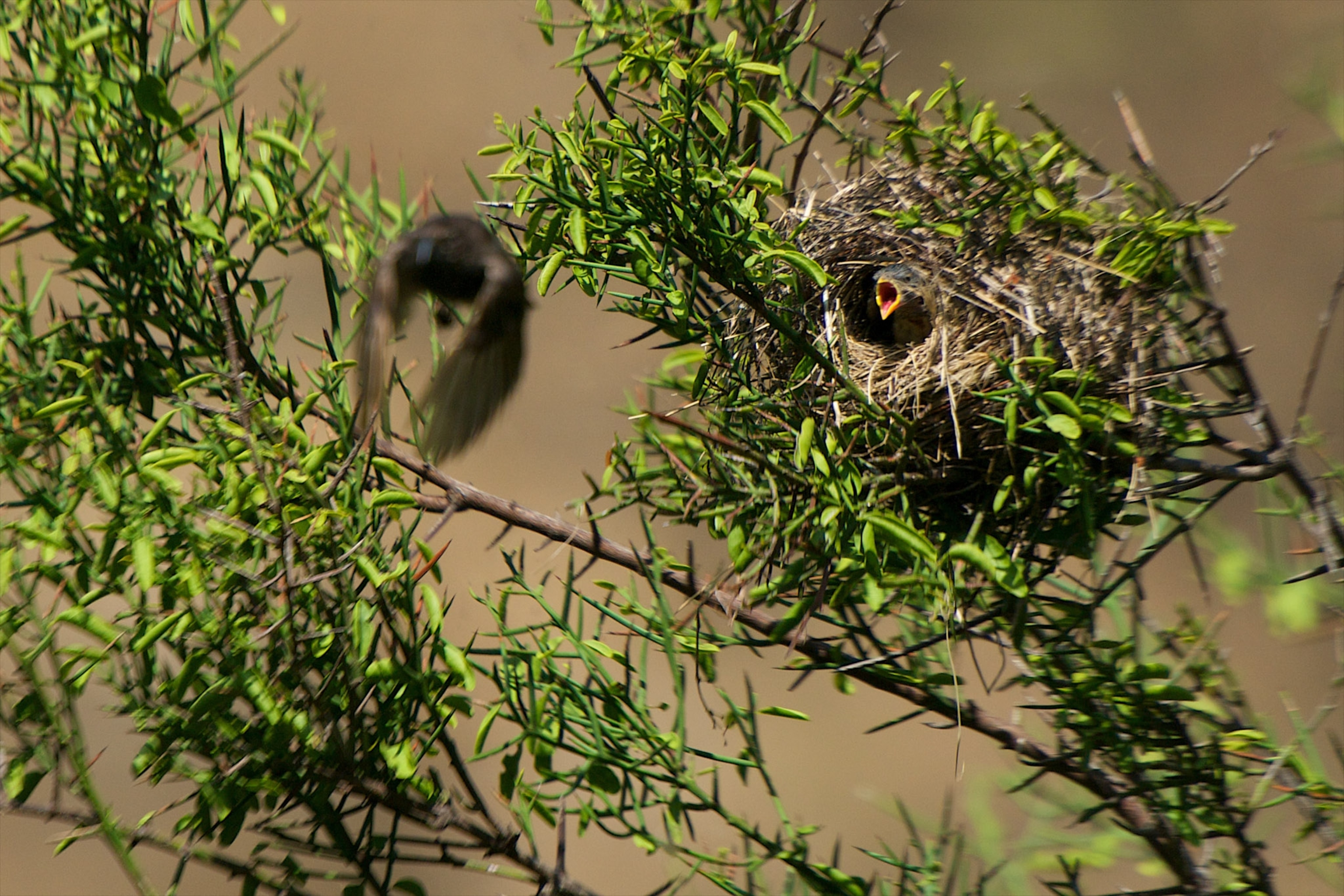
Of course, the finches have evolved to survive in the direct sun environments, Knutie says. But what they haven’t evolved to handle is a nest full of ravenous fly larvae.
“When you add this significant stressor of parasitism to the equation, I think it's a perfect storm,” she says. “They can either deal with heat stress, or they can deal with recovering blood from the parasite. But they can’t do both. That’s my hypothesis.”
One hypothesis among many, at least.
Knutie and her colleagues also have studies in the works to determine to what extent supplemental feeding might help the birds. They’ve also shown that, when given access to cotton balls dipped in insecticide, the finches will build nests with them—essentially fumigating their own nests in the process.
There’s even a plan to release parasitic wasps that are natural predators of avian vampire flies, once it’s determined that the wasps won’t pose a threat to other native species.
“So we really need these studies to understand why some populations or some species do better than others before we decided any kind of action,” Knutie says.

